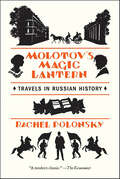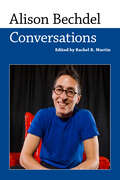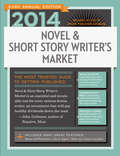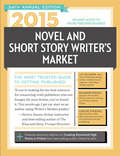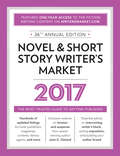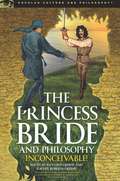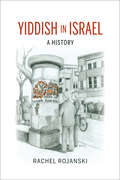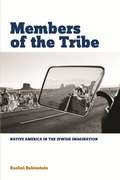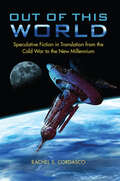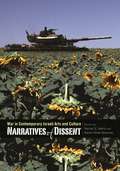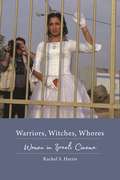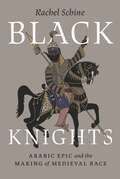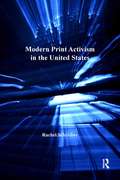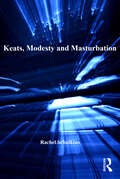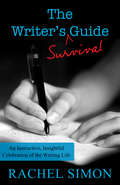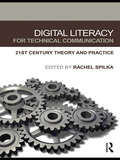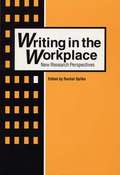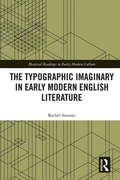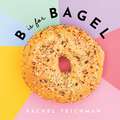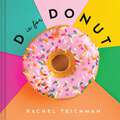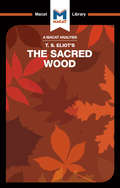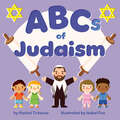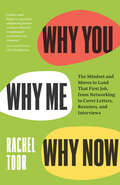- Table View
- List View
Molotov's Magic Lantern: Travels in Russian History
by Rachel PolonskyWhen the British journalist Rachel Polonsky moves to Moscow, she discovers an apartment on Romanov Street that was once home to the Soviet elite. One of the most infamous neighbors was the ruthless apparatchik Vyacheslav Molotov, a henchman for Stalin who was a participant in the collectivizations and the Great Purge—and also an ardent bibliophile. In what was formerly Molotov's apartment, Polonsky uncovers an extensive library and an old magic lantern—two things that lead her on an extraordinary journey throughout Russia and ultimately renew her vision of the country and its people.In Molotov's Magic Lantern, Polonsky visits the haunted cities and vivid landscapes of the books from Molotov's library: works by Chekhov, Dostoevsky, Pushkin, Akhmatova, and others, some of whom were sent to the Gulag by the very man who collected their books. With exceptional insight and beautiful prose, Polonsky writes about the longings and aspirations of these Russian writers and others in the course of her travels from the Arctic to Siberia and from the forests around Moscow to the vast steppes. A singular homage to Russian history and culture, Molotov's Magic Lantern evokes the spirit of the great artists and the haunted past of a country ravaged by war, famine, and totalitarianism.
Alison Bechdel: Conversations (Conversations with Comic Artists Series)
by Rachel R. MartinDue to the huge success of her graphic memoir Fun Home: A Family Tragicomic in 2006 and its subsequent Tony Award–winning musical adaptation in 2009, Alison Bechdel (b. 1960) has recently become a household name. However, Bechdel, who has won numerous awards including a MacArthur Fellowship, has been writing and drawing comics since the early 1980s. Her comic strip Dykes to Watch Out For (DTWOF) stood out as one of the first to depict lesbians in popular culture and is widely hailed as an essential LGBTQ resource. It is also from this comic strip that the wildly popular Bechdel Test—a test to gauge positive female representation in film—obtained its name. While DTWOF secured Bechdel’s role in the comics world and queer community long before her mainstream success, Bechdel now experiences notoriety that few comics artists ever achieve and that women cartoonists have never attained.Spanning from 1990 to 2017, Alison Bechdel: Conversations collects twelve interviews that illustrate how Bechdel uses her own life, relationships, and contemporary events to expose the world to what she has referred to as the “fringes of acceptability”—the comics genre as well as queer culture and identity. These interviews reveal her intentionality in the use of characters, plots, structure, and cartooning to draw her readers toward disrupting the status quo.Starting with her earliest interviews on public access television and in little-known comics and queer presses, Rachel R. Martin traces Bechdel’s career from her days with DTWOF to her popularity with Fun Home and Are You My Mother? This volume includes her “one-off” DTWOF strips from November 2016 and March 2017 (not anthologized anywhere else) and in-depth discussions of her laborious creative process as well as upcoming projects.
2014 Novel & Short Story Writer's Market (Market Ser.)
by Rachel RandallThe best resource for getting your fiction published! The 2014 Novel & Short Story Writer's Market is the only resource you'll need to get your short stories, novellas, and novels published. As with past editions, Novel & Short Story Writer's Market offers hundreds of listings for book publishers, literary agents, fiction publications, contests, and more. Each listing includes contact information, submission guidelines, and other important tips. You'll also find an increased focus on all aspects of the writing life, from insightful articles on craft and technique to helpful advice on getting published and marketing your work. The 2014 Novel & Short Story Writer's Market offers everything a fiction writer needs to achieve publishing success. Check out interviews with award-winning author Man Martin (Days of the Endless Corvette and Paradise Dogs) and best-selling author and writing instructor James Scott Bell (Plot & Structure and Conflict & Suspense)!
2014 Novel & Short Story Writer's Market: The Most Trusted Guide to Getting Published (Market #2015)
by Rachel RandallThe best resource for getting your fiction published! The 2014 Novel & Short Story Writer's Market is the only resource you'll need to get your short stories, novellas, and novels published. As with past editions, Novel & Short Story Writer's Market offers hundreds of listings for book publishers, literary agents, fiction publications, contests, and more. Each listing includes contact information, submission guidelines, and other important tips. You'll also find an increased focus on all aspects of the writing life, from insightful articles on craft and technique to helpful advice on getting published and marketing your work. The 2014 Novel & Short Story Writer's Market offers everything a fiction writer needs to achieve publishing success. Check out interviews with award-winning author Man Martin (Days of the Endless Corvette and Paradise Dogs) and best-selling author and writing instructor James Scott Bell (Plot & Structure and Conflict & Suspense)!
Novel and Short Story Writer’s Market 2017: The Most Trusted Guide to Getting Published (Market #2017)
by Rachel Randall36th Annual Edition
The Princess Bride and Philosophy: Inconceivable!
by Richard Greene Rachel Robison-GreeneThe Princess Bride is the 1987 satirical adventure movie that had to wait for the Internet and DVDs to become the most quoted of all cult classics. <P><P> The Princess Bride and Philosophy is for all those who have wondered about the true meaning of "Inconceivable!," why the name "Roberts" uniquely inspires fear, and whether it's truly a miracle to restore life to someone who is dead, but not necessarily completely dead. The Princess Bride is filled with people trying to persuade each other of various things, and invites us to examine the best methods of persuasion. It's filled with promises, some kept and some broken, and cries out for philosophical analysis of what makes a promise and why promises should be kept. It's filled with beliefs which go beyond the evidence, and philosophy can help us to decide when such beliefs can be justified. It's filled with political violence, both by and against the recognized government, and therefore raises all the issues of political philosophy. Westley, Buttercup, Prince Humperdinck, Inigo Montoya, the giant Fezzik, and the Sicilian Vizzini keep on re-appearing in these pages, as examples of philosophical ideas. Is it right for Montoya to kill the six-fingered man, even though there is no money in the revenge business? What's the best way to deceive someone who knows you're trying to deceive him? Are good manners a kind of moral virtue? Could the actions of the masked man in black truly be inconceivable even though real? What does ethics have to say about Miracle Max's pricing policy? How many shades of meaning can be conveyed by "As You Wish"?
Yiddish in Israel: A History (Perspectives On Israel Studies)
by Rachel Rojanski“A pioneering study” of how two languages have coexisted in the Jewish state, with “a wealth of information” on Yiddish newspapers, theater, and more (AJS Review).Yiddish in Israel: A History challenges the commonly held view that Yiddish was suppressed or even banned by Israeli authorities for ideological reasons, offering instead a radical new interpretation of the interaction between Yiddish and Israeli Hebrew cultures. Rachel Rojanski tells the compelling unknown story of how Yiddish, the most widely used Jewish language in the pre-Holocaust world, fared in Zionist Israel, the land of Hebrew.Following Yiddish in Israel from the proclamation of the State until today, Rojanski reveals that although Israeli leadership made promoting Hebrew a high priority, it did not have a definite policy on Yiddish. The language’s varying fortune through the years was shaped by social and political developments, as well as the cultural atmosphere in Israel. Public perception of the language and its culture, the rise of identity politics, and political and financial interests all played a part.Using a wide range of archival sources, newspapers, and Yiddish literature, Rojanski follows the Israeli Yiddish scene through the history of the Yiddish press, Yiddish theater, early Israeli Yiddish literature, and high Yiddish culture. With compassion, she explores the tensions during Israel’s early years between Yiddish writers and activists and Israel’s leaders, most of whom were themselves Eastern European Jews balancing their love of Yiddish with their desire to promote Hebrew. Finally Rojanski follows Yiddish into the twenty-first century, telling the story of the revived interest in Yiddish among Israeli-born children of Holocaust survivors as they return to the language of their parents.
Members of the Tribe: Native America in the Jewish Imagination
by Rachel RubinsteinIn Members of the Tribe: Native America in the Jewish Imagination, author Rachel Rubinstein examines interventions by Jewish writers into an ongoing American fascination with the "imaginary Indian." Rubinstein argues that Jewish writers represented and identified with the figure of the American Indian differently than their white counterparts, as they found in this figure a mirror for their own anxieties about tribal and national belonging. Through a series of literary readings, Rubinstein traces a shifting and unstable dynamic of imagined Indian-Jewish kinship that can easily give way to opposition and, especially in the contemporary moment, competition. In the first chapter, "Playing Indian, Becoming American," Rubinstein explores the Jewish representations of Indians over the nineteenth century, through narratives of encounter and acts of theatricalization. In chapter 2, "Going Native, Becoming Modern," she examines literary modernism's fascination with the Indian-poet and a series of Yiddish translations of Indian chants that appeared in the modernist journal Shriftn in the 1920s. In the third chapter, "Red Jews," Rubinstein considers the work of Jewish writers from the left, including Tillie Olsen, Michael Gold, Nathanael West, John Sanford, and Howard Fast, and in chapter 4, "Henry Roth, Native Son," Rubinstein focuses on Henry Roth's complicated appeals to Indianness. The final chapter, "First Nations," addresses contemporary contestations between Jews and Indians over cultural and territorial sovereignty, in literary and political discourse as well as in museum spaces. As Rubinstein considers how Jews used the figure of the Indian to feel "at home" in the United States, she enriches ongoing discussions about the ways that Jews negotiated their identity in relation to other cultural groups. Students of Jewish studies and literature will enjoy the unique insights in Members of the Tribe.
Out of This World: Speculative Fiction in Translation from the Cold War to the New Millennium
by Rachel S. CordascoThe twenty-first century has witnessed an explosion of speculative fiction in translation (SFT). Rachel Cordasco examines speculative fiction published in English translation since 1960, ranging from Soviet-era fiction to the Arabic-language dystopias that emerged following the Iraq War. Individual chapters on SFT from Korean, Czech, Finnish, and eleven other source languages feature an introduction by an expert in the language's speculative fiction tradition and its present-day output. Cordasco then breaks down each chapter by subgenre--including science fiction, fantasy, and horror--to guide readers toward the kinds of works that most interest them. Her discussion of available SFT stands alongside an analysis of how various subgenres emerged and developed in a given language. She also examines the reasons a given subgenre has been translated into English. An informative and one-of-a-kind guide, Out of This World offers readers and scholars alike a tour of speculative fiction's new globalized era.
Narratives of Dissent: War in Contemporary Israeli Arts and Culture
by Rachel S. Harris Ranen Omer-ShermanThe year 1978 marked Israel's entry into Lebanon, which led to the long-term military occupation of non-sovereign territory and the long, costly war in Lebanon. In the years that followed, many Israelis found themselves alienated from the idea that their country used force only when there was no alternative, and Israeli society eventually underwent a dramatic change in attitude toward militarization and the infallibility of the IDF (Israel Defense Forces). In Narratives of Dissent: War in Contemporary Israeli Arts and Culture editors Rachel S. Harris and Ranen Omer-Sherman collect nineteen essays that examine the impact of this cultural shift on Israeli visual art, music, literature, poetry, film, theatre, public broadcasting, and commemoration practices after 1978. Divided into three thematic sections-Private and Public Spaces of Commemoration and Mourning, Poetry and Prose, and Cinema and Stage-this collection presents an exciting diversity of experiences, cultural interests, and disciplinary perspectives. From the earliest wartime writings of S. Yizhar to the global phenomenon of films such as Beaufort, Waltz with Bashir, and Lebanon, the Israeli artist's imaginative and critical engagement with war and occupation has been informed by the catalysts of mourning, pain, and loss, often accompanied by a biting sense of irony. This book highlights many of the aesthetic narratives that have wielded the most profound impact on Israeli culture in the present day. These works address both incremental and radical changes in individual and collective consciousness that have spread through Israeli culture in response to the persistent affliction of war. No other such volume exists in Hebrew or English. Students and teachers of Israeli studies will appreciate Narratives of Dissent.
Warriors, Witches, Whores: Women in Israeli Cinema
by Rachel S. HarrisWarriors, Witches, Whores: Women in Israeli Cinema is a feminist study of Israel’s film industry and the changes that have occurred since the 1990s. Working in feminist film theory, the book adopts a cultural studies approach, considering the creation of a female-centered and thematically feminist film culture in light of structural and ideological shifts in Israeli society. Author Rachel S. Harris situates these changes in dialogue with the cinematic history that preceded them and the ongoing social inequalities that perpetuate women’s marginalization within Israeli society. While no one can deny Israel’s Western women’s advancements, feminist filmmakers frequently turn to Israel’s less impressive underbelly as sources for their inspiration. Their films have focused on sexism, the negative impact of militarism on women’s experience, rape culture, prostitution, and sexual abuse. These films also tend to include subjects from society’s geographical periphery and social margins, such as female foreign workers, women, and refugees. Warriors, Witches, Whoresis divided into three major sections and each considers a different form of feminist engagement. The first part explores films that situate women in traditionally male spheres of militarism, considering the impact of interjecting women within hegemonic spaces or reconceptualizing them in feminist ways. The second part recovers the narratives of women’s experience that were previously marginalized or silenced, thereby creating a distinct female space that offers new kinds of storytelling and cinematic aesthetics that reflect feminist expressions of identity. The third part offers examples of feminist activism that reach beyond the boundaries of the film to comment on social issues, particularly those which affect women. This section demonstrates how feminists use film (and work within the film industry) in order to women’s position in society. While there are thematic overlaps between the chapters, each section marks structural differences in the modes of feminist response. Warriors, Witches, Whores considers the ways social and political power have impacted the representation of women and looks to how feminist filmmakers have fought against these inequities behind the camera, in the stories they tell, and in the ways women are depicted on screen. Students and scholars of film, gender, or cultural studies will appreciate this approachable monograph.
Black Knights: Arabic Epic and the Making of Medieval Race
by Rachel SchineA new account of racial logics in premodern Islamic literature. In Black Knights, Rachel Schine reveals how the Arabic-speaking world developed a different form of racial knowledge than their European neighbors during the Middle Ages. Unlike in European vernaculars, Arabic-language ideas about ethnic difference emerged from conversations extending beyond the Mediterranean, from the Sahara to the Indian Ocean. In these discourses, Schine argues, racialized blackness became central to ideas about a global, ethnically inclusive Muslim world. Schine traces the emergence of these new racial logics through popular Islamic epics, drawing on legal, medical, and religious literatures from the period to excavate a diverse and ever-changing conception of blackness and race. The result is a theoretically nuanced case for the existence and malleability of racial logics in premodern Islamic contexts across a variety of social and literary formations.
Forms of Modernity
by Rachel SchmidtIt's a critical cliché that Cervantes' Don Quixote is the first modern novel, but this distinction raises two fundamental questions. First, how does one define a novel? And second, what is the relationship between this genre and understandings of modernity? In Forms of Modernity, Rachel Schmidt examines how seminal theorists and philosophers have wrestled with the status of Cervantes' masterpiece as an 'exemplary novel', in turn contributing to the emergence of key concepts within genre theory.Schmidt's discussion covers the views of well-known thinkers such as Friedrich Schlegel, José Ortega y Gasset, and Mikhail Bakhtin, but also the pivotal contributions of philosophers such as Hermann Cohen and Miguel de Unamuno. These theorists' examinations of Cervantes's fictional knight errant character point to an ever-shifting boundary between the real and the virtual. Drawing from both intellectual and literary history, Forms of Modernity richly explores the development of the categories and theories that we use today to analyze and understand novels.
Modern Print Activism in the United States
by Rachel SchreiberThe explosion of print culture that occurred in the United States at the turn of the twentieth century activated the widespread use of print media to promote social and political activism. Exploring this phenomenon, the essays in Modern Print Activism in the United States focus on specific groups, individuals, and causes that relied on print as a vehicle for activism. They also take up the variety of print forms in which calls for activism have appeared, including fiction, editorials, letters to the editor, graphic satire, and non-periodical media such as pamphlets and calendars. As the contributors show, activists have used print media in a range of ways, not only in expected applications such as calls for boycotts and protests, but also for less expected aims such as the creation of networks among readers and to the legitimization of their causes. At a time when the golden age of print appears to be ending, Modern Print Activism in the United States argues that print activism should be studied as a specifically modernist phenomenon and poses questions related to the efficacy of print as a vehicle for social and political change.
Keats, Modesty and Masturbation
by Rachel SchulkinsExamining John Keats’s reworking of the romance genre, Rachel Schulkins argues that he is responding to and critiquing the ideals of feminine modesty and asexual femininity advocated in the early nineteenth century. Through close readings of Isabella; or the Pot of Basil, The Eve of St. Agnes, Lamia and ’La Belle Dame sans Merci,’ Schulkins offers a re-evaluation of Keats and his poetry designed to demonstrate that Keats’s sexual imagery counters conservative morality by encoding taboo desires and the pleasures of masturbation. In so doing, Keats presents a version of female sexuality that undermines the conventional notion of the asexual female. Schulkins engages with feminist criticism that largely views Keats as a misogynist poet who is threatened by the female’s overwhelming sexual and creative presence. Such criticism, Schulkins shows, tends towards a problematic identification between poet and protagonist, with the text seen as a direct rendering of authorial ideology. Such an interpretation neither distinguishes between author, protagonist, text, social norms and cultural history nor recognises the socio-sexual and political undertones embedded in Keats’s rendering of the female. Ultimately, Schulkins’s book reveals how Keats’s sexual politics and his refutation of the asexual female model fed the design, plot and vocabulary of his romances.
The Writer's Survival Guide: An Instructive, Insightful Celebration of the Writing Life
by Rachel SimonThis inspirational guide for aspiring and experienced writers was originally published in 1997. Written in a friendly, hopeful, and gently humorous tone, it focuses on the creative process and emotional ups and downs of the creative life, providing insights into how to persist in the face of rejection, frustration, feelings of inadequacy, lack of support from loved ones, and more. It also offers practical how-to advice, from organizing your time so you actually sit down and write to reading as a writer. This ebook's rerelease of The Writer's Survival Guide includes a new introduction that discusses the origins of the book and how, in spite of the many changes in publishing and technology, it remains relevant today.
Digital Literacy for Technical Communication: 21st Century Theory and Practice
by Rachel SpilkaDigital Literacy for Technical Communication helps technical communicators make better sense of technology’s impact on their work, so they can identify new ways to adapt, adjust, and evolve, fulfilling their own professional potential. This collection is comprised of three sections, each designed to explore answers to these questions: How has technical communication work changed in response to the current (digital) writing environment? What is important, foundational knowledge in our field that all technical communicators need to learn? How can we revise past theories or develop new ones to better understand how technology has transformed our work? Bringing together highly-regarded specialists in digital literacy, this anthology will serve as an indispensible resource for scholars, students, and practitioners. It illuminates technology’s impact on their work and prepares them to respond to the constant changes and challenges in the new digital universe.
Writing in The Workplace: New Research Perspectives
by Rachel SpilkaRachel Spilka brings together nineteen previously unpublished essays concerned with ways in which recent research on workplace writing can contribute to the future direction of the discipline of technical and professional writing. Hers is the first anthology on the social perspective in professional writing to feature focused discussions of research advances and future research directions. The workplace as defined by this volume is a widely diverse area that encompasses small companies and large corporations, public agencies and private firms, and a varied population of writersengineers, managers, nurses, social workers, government employees, and others. Because much research has been conducted on the relationship between workplace writing and social contexts since the ground breaking 1985 publication of Odell and Goswami s "Writing in Nonacademic Settings, "Spilka contends that this is an appropriate time for the professional writing community to consider what it has learned to date and where it should be heading next in light of these recent discoveries. She argues that now professional writers should try to ask better questions and to define new directions. Spilka breaks the anthology into two parts. Part 1 is a collection of ten essays presenting textual and qualitative studies conducted by the authors in the late l980s on workplace writing. Spilka has chosen these studies as representative of the finest research being conducted in professional writing that can serve as models for current and future researchers in the field. Barbara Couture, Jone Rymer, and Barbara Mirel report on surveys they conducted relying on the social perspective both to design survey instruments and to analyze survey data. Jamie MacKinnon assesses a qualitative study describing what workplace professionals might need to learn about social contexts and workplace writing. Susan Kleimann and editor Rachel Spilka discuss multiple case studies they conducted that help explain the value during the composing process of social interaction among the participants of a rhetorical situation. Judy Z. Segal explores the negotiation between the character of Western medicine and the nature of its professional discourse. Jennie Dautermann describes a qualitative study in which a group of nurses "claimed the authority to restructure their own procedural information system. " Anthony Parefinds in a case study of social workers that writing can be constrained heavily by socially imposed limitations and restrictions. Graham Smart describes a study of discourse conventions in a financial institution. Geoffrey A. Cross reports on a case study of the interrelation of genre, context, and process in the group production of an executive letter and report. Part 2 includes nine essays that assess the implications of recent research on workplace writing on theory, pedagogy and practice, and future research directions. Mary Beth Debs considers research implications for the notion of authorship. Jack Selzer explores the idea of intertextuality. Leslie A. Olson reviews the literature central to the concept of a discourse community. James A. Reither suggests that writing-as-collaboration in the classroom focuses "more on the production of texts to be evaluated than on ways in which texts arise out of other texts. " Rachel Spilka continues Reither s discussion of how writing pedagogy in academia might be revised with regard to the social perspective. Patricia Sullivan and James E. Porter respond to the debate about the authority of theory versus that of practice on researchers notions of methodology. Mary Beth Debs considers which methods used in fields related to writing hold promise for research in workplace writing. Stephen Doheny-Farina discusses how some writing researchers are questioning the underlying assumptions of traditional ethnography. Finally, Tyler Bouldin and Lee Odell suggest future directions for the research of workplace writing. "
The Typographic Imaginary in Early Modern English Literature (Material Readings in Early Modern Culture)
by Rachel StennerThe typographic imaginary is an aesthetic linking authors from William Caxton to Alexander Pope, this study centrally contends. Early modern English literature engages imaginatively with printing and this book both characterizes that engagement and proposes the typographic imaginary as a framework for its analysis. Certain texts, Rachel Stenner states, describe the people, places, concerns, and processes of printing in ways that, over time, generate their own figurative authority. The typographic imaginary is posited as a literary phenomenon shared by different writers, a wider cultural understanding of printing, and a critical concept for unpicking the particular imaginative otherness that printing introduced to literature. Authors use the typographic imaginary to interrogate their place in an evolving media environment, to assess the value of the printed text, and to analyse the roles of other text-producing agents. This book treats a broad array of authors and forms: printers’ manuals; William Caxton’s paratexts; the pamphlet dialogues of Robert Copland and Ned Ward; poetic miscellanies; the prose fictions of William Baldwin, George Gascoigne, and Thomas Nashe; the poetry and prose of Edmund Spenser; writings by John Taylor and Alexander Pope. At its broadest, this study contributes to an understanding of how technology changes cultures. Located at the crossroads between literary, material, and book historical research, the particular intervention that this work makes is threefold. In describing the typographic imaginary, it proposes a new framework for analysis of print culture. It aims to focus critical engagement on symbolic representations of material forms. Finally, it describes a lineage of late medieval and early modern authors, stretching from the mid-fifteenth to the mid-eighteenth centuries, that are linked by their engagement of a particular aesthetic.
Truth without Predication: The Role of Placing in the Existential There-Sentence
by Rachel SzekelyThis book contains an original analysis of the existential there-sentence from a philosophical-linguistic perspective. At its core is the claim that there-sentences' form is distinct from that of ordinary subject-predicate sentences, and that this fundamental difference explains the construction's unusual grammatical and discourse properties.
B is for Bagel (ABCD-Eats)
by Rachel Teichman Rebecca WrightFrom Asiago to Za'atar, and "Everything" in between, B is for Bagel teaches the whole alphabet, while introducing children to traditional and innovative bagel flavors. Vibrant photographs of each life-size bagel make turning pages so much fun! Shake, splash and roll your way through this book, where unicorns and rainbows take bagel form, and cream cheese knows no limits! Kids will love finding a new favorite bagel, while deciding if they like lox, whitefish salad or maybe just extra schmear.
D is for Donut (ABCD-Eats)
by Rachel Teichman Rebecca Wright Rachel TiechmanDeliciously delightful donuts from A to Z!“ A is for Apple Fritter” and “ B is for Beignet.” Get ready to dive into this mouthwatering alphabet book that will surely sweeten your day! Lively rhyming text covers all the classics, from Jelly and Rainbow Sprinkles to É clairs and Old-Fashioneds, while introducing Loukoumades, Sufganiyot, and other donuts from around the world. Life-size photos look ready to eat and keep readers asking for more. Practicing your ABCs never looked so yummy!
The Sacred Wood: Essays on Poetry and Criticism
by Rachel TeubnerThe essay for which The Sacred Wood is primarily remembered is one of the most famous pieces of criticism in English: “Tradition and the Individual Talent” helped to re-orientate arguments about the study of literature and its production by redefining the nature of tradition and the artist's relation to it.At a time when the word “traditional” had become a way of damning with faint praise by reference to the past, Eliot reinterpreted the term to mean something entirely different. It is not, he argues, something just “handed down,” but, instead, a prize to be obtained “by great labour,” not least in the making of a huge effort of understanding how the past fits together. Seen thus, Eliot suggests, a literary and artistic tradition “has a simultaneous existence and composes a simultaneous order” – and it is not just past, but present as well. For Eliot, “art never improves,” but only changes, and each part of the tradition is constantly being reinterpreted in light of what is added to the whole. The role of the poet, in Eliot's view, is to subjugate their own personality, and become “a receptacle,” in which “numberless feelings, phrases, images… can unite to form a new compound.” Redefining the issue of poets' relations to the past in this new way is a fine example of creative thinking, and Eliot’s ability to connect existing concepts in new ways was what gave weight to the argument that he advanced: that poets cannot succeed without understanding that they are taking their place on a continuum that stretches back to all their predecessors, and incorporate the ideas, strengths and failings of the entire body of work that those poets represented.
ABCs of Judaism
by Rachel TichauerDiscover Judaism from A to Z with this fun and informative alphabet board book—the perfect baby step in a little one&’s journey of faith!A is for afikomen…B is for bar and bat mitzvah…C is for challah…Featuring key customs, traditions, holidays, and more, this board book offers a great A to Z introduction to Jewish culture and religion.Charming, kid-friendly art pairs perfectly with simple, accessible text in this board book for the youngest readers.
Why You, Why Me, Why Now: The Mindset and Moves to Land That First Job, from Networking to Cover Letters, Resumes, and Interviews
by Rachel ToorA clear, accessible, and fun guide on everything it takes to land a job. Searching for a job can be hard and demoralizing work. In Why You, Why Me, Why Now, Rachel Toor delivers some good news. The most important thing is within your control—a mindset that shows you know the goals of the organization you want to work for and that you’re ready and eager to contribute. Toor provides, with compassion and enthusiasm, strategies to make it easy for hiring managers to say “yes.” Through useful and funny anecdotes, she offers advice from professionals across industries and focuses on the attitude applicants can adopt to find success. Revealing traits employers seek, Toor shows how to craft winning cover letters, ways to tailor resumes for each job, and practical tips to get past AI screening. She also explains how to use LinkedIn and gives tips on preparing for interviews. Throughout, the book features Toor’s notes on writing well to help in landing a first job and beyond. Encouraging, entertaining, and blunt, this is a job-search guide like no other.
